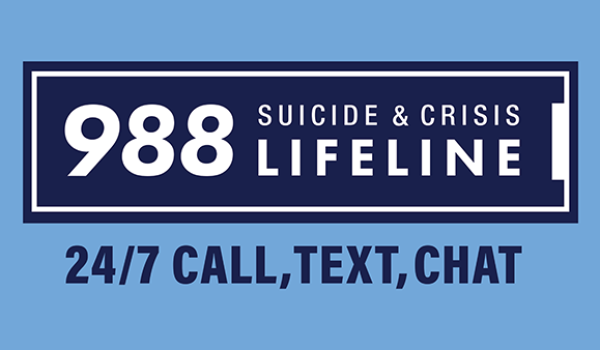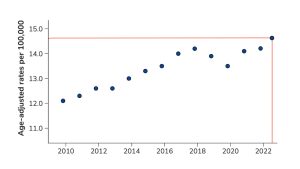Record High U.S. Suicide Rate
Factors Contributing To the Rising Suicide Rate
Suicide rates have been on the rise since the turn of the 21st Century – becoming even more pronounced in recent years.
In 2023, the suicide rate in the United States hit 14.7 (per 100,000 individuals), matching 2018 as the highest suicide rate since 1941.
–
Contributing Factors
There are multiple contributing factors to the rise in suicide rates which often overlap. More recently developed factors such as cyberbullying and social isolation have played a role in the overall uptick in rates.
1. Economic Stress
- Job loss, financial instability, and economic downturns (such as the 2008 financial crisis and pandemic-related job losses) have been linked to higher suicide rates.
- Financial insecurity contributes to long-term stress and depression.
2. Social Isolation & Loneliness
- Digital interactions over in-person relationships have led to increased social isolation.
- Elderly individuals and younger generations (especially Gen Z) report high levels of loneliness, which is a known risk factor.
3. Substance Abuse & Addiction
- Alcohol and drug abuse, particularly opioids, significantly increase suicide risk.
- Substance use disorders often co-occur with depression and anxiety.
4. Social Media & Cyberbullying
- Increased social comparison and exposure to negative content on social media can lead to feelings of inadequacy and depression.
- Cyberbullying, particularly among teens and young adults, has been linked to increased suicide risk.
5. Mental Health Disorders
- Those experiencing depression, anxiety, bipolar disorder, and schizophrenia are at greater risk.
- Depression is often ignored or inadequately treated among individuals with schizophrenia, leading to an increased risk for suicidal behavior.
Mental Health’s Significant Role
Reversing Suicide Rate Trends
Suicide prevention advocates have noted that the integration of mental health care into primary healthcare for improved access to mental health services reduces suicide rates as well. Such practices have improved risk screening and assessment, resulting in a 25% decrease in suicide attempts in the 90 days after a primary care visit compared to usual care clinics.
Psychologists have also found that evaluating newer approaches like EHR-derived algorithms, internet-based screening methods, ketamine’s benefit for preventing attempts, and passive monitoring of acute risk changes have been sucessful in preventing suicidal thoughts and behaviors. Advancements such as these combine accessible mental health care while remaining on the forefront of technology to combat suicide effectively.
The Door Switch™ is also actively finding solutions to reduce suicide rates, among veterans in particular. Our over-the-door sensors alert behavioral healthcare when an inpatient attempts self-harm. A top-of-the-door alarm immediately notifies attending staff of a hanging suicide attempt. The adoption of these technologies has the potential to significantly reduce suicide rates by enabling earlier detection and more effective intervention.





